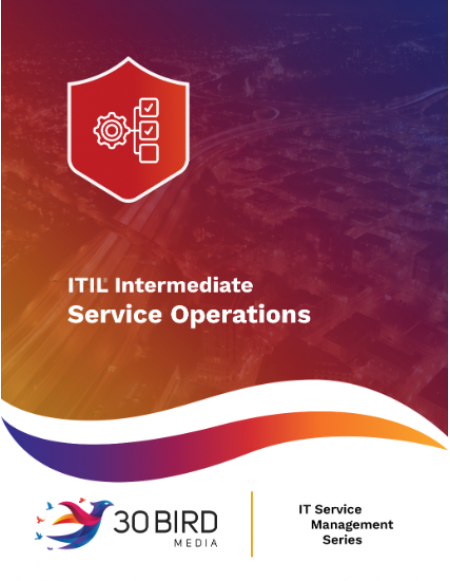Chapter 1: Introduction to Service Operation
Describe the purpose, goals and objectives of service operation
Describe the scope of service operation
Describe the business value of service operation
Describe the context of service operation in the ITIL service lifecycle
Chapter 2: Service Operation Principles
Balance in service operation
Providing a good service
Involvement in other lifecycle stages
Operational health
Communication
Documentation
Service Operation inputs and outputs with the service lifecycle
Chapter 3: Service Operation Processes
Understand the purpose and objectives of event management
Understand the scope of event management
Understand the value to business of event management
Understand the policies, principles and basic concepts of event management
Understand event management activities, methods and techniques
Understand the triggers, inputs, outputs and interfaces of event management
Understand the critical success factor and key performance indicators of event management
Understand the purpose and objectives of incident management
Understand the scope of incident management
Understand the value to business of incident management
Understand the policies, principles and basic concepts of incident management
Understand incident management activities, methods and techniques
Understand the triggers, inputs, outputs and interfaces of incident management
Understand the critical success factors and key performance indicators of incident management
Understand the purpose and objectives of request fulfillment
Understand the scope of request fulfillment
Understand the value to business of request fulfillment
Understand the policies, principles and basic concepts of request fulfillment
Understand the triggers, inputs, outputs and interfaces of request fulfillment
Understand the critical success factors and key performance indicators of request fulfillment
Understand the purpose and objectives of problem management
Understand the scope of problem management
Understand the value to business of problem management
Understand the policies, principles and basic concepts of problem management
Understand problem management activities, methods and techniques
Understand the triggers, inputs, outputs and interfaces of problem management
Understand the critical success factors and key performance indicators of problem management
Understand the purpose and objectives of access management
Understand the scope of access management
Understand the value to business of access management
Understand the policies, principles and basic concepts of access management
Understand access management activities, methods and techniques
Understand the triggers, inputs, outputs and interfaces of access management
Understand the critical success factors and key performance indicators of access management
Chapter 4: Common Service Operation Activities
Monitoring and control
IT operations
Server and mainframe management and support
Network management
Storage and archive
Database administration
Directory services management
Desktop and mobile device support
Middleware management
Internet/web management
Facilities and data center management
Operational activities of processes covered in other lifecycle stages
Improvement of operational activities
Chapter 5: Organizing for Service Operation
Service desk function
Technical management function
IT operations management function
Application management function
Roles
Service operation organizational structures
Chapter 6: Technology Considerations
Technology, tools and telephony requirements for service operation processes and functions:
Event management
Incident management
Request fulfillment
Problem management
Access management
Service desk
Chapter 7: Implementation of Service Operation
Understand, describe, identify, demonstrate, apply, distinguish, produce, decide and/or analyze the following:
Managing change in service operation
Service operation and project management
Assessing and managing risk in service operation
Operational staff in design and transition
Planning and implementing service management technologies
Chapter 8: Challenges, Critical Success Factors & Risks
Understand, describe, identify, demonstrate, apply, distinguish, produce, decide and/or analyze the following:
Challenges
Critical success factors and key performance indicators
Risks
ITIL Service Operation provides guidance on organizing service delivery through the functions of operations management, technical management, and applications management integrated with the service desk that provides a key link between their activities and the business. It identifies how to link operational activities to the value of the organization and how to couple infrastructure and service management for optimum service quality and value.
To request the PowerPoints for this course, please e-mail sales@30bird.com.

